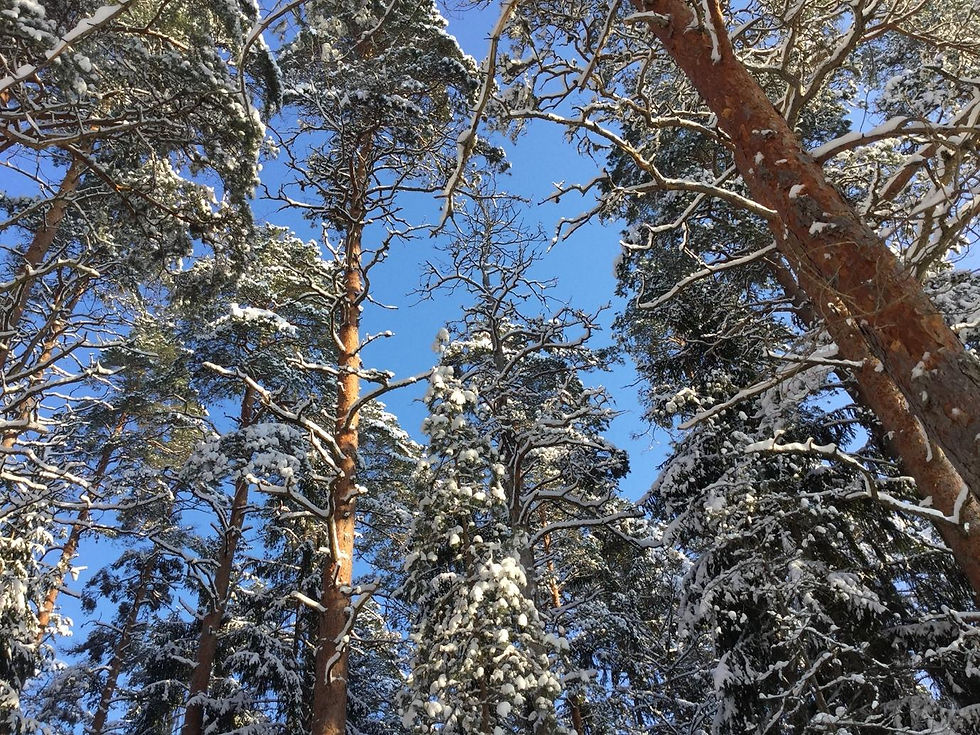The World of Folklore in Estonia
- Reika Mihara

- Mar 16, 2023
- 3 min read
Updated: Mar 23, 2023
In our visit to University of Tartu, we explored clues that folktales give to the nation, nature, and humans of Estonia.
Folklore at the Heart of Estonian Identity
“Estonian folklore is surely connected with the national identity,” says Ülo Valk, professor of Estonian and Comparative Folklore, University of Tartu. Systematic collection of Estonian folklore dates back to 1830s, when the Learned Estonian Society was established to study people, language, and literature of Estonia [1]. One of its founders Friedrich Robert Faehlmann (1798–1850) compiled Estonian legends into a written work, which became published in Estonian language in 1866 [2]. This overlaps with the Time of National Awakening when, being under Russian rule, manifestations of Estonian cultural identity including literary traditions and song festivals were established [3].

A visit to University of Tartu (February 23, 2023)
Encounters with Spirits in the Forest
In many folktales, the forest is a mystical realm where protagonists encounter spirits. Between the human habitat and the forest are often sauna buildings, where the two worlds intermingle [4]. In a story written by Jaan Hünerson in 1897, a man draws anger from a forest devil by getting married to a woman that he loved instead of the devil’s daughter [5]. Cursing the couple, the forest spirit transforms the wife into a werewolf. Having discovered the devil’s trick and rescued his wife, the man eventually invites the forest spirit to a sauna building and destroys him by burning the sauna.

The forest of Palupõhja (February 22, 2023)
Animals too are key components of folktales. A story written by Anton Suurkask in 1894 opens with a hunter encountering a daughter of the bird king in the forest [6]. Soon after the two’s marriage, the manor lord plots to kill the hunter to obtain his wife. With his wife’s magical assistance, the hunter evades the lord’s plans and eventually succeeds in getting rid of him. Stories composed in 19th century often portray manor owners negatively, reflecting the mentality of Estonians toward German manor owners at that time [7].
National Epic Embedded in the Landscape
Folklore is not only read in the texts but also physically experienced in the landscape. “Collection of the folklore triggered the rediscovery of ‘sacred natural sites’ as spiritual centers,” says Professor Valk. Sacred natural sites refer to venues such as groves and hills associated with folktales where people may visit to remember the stories, feel intimacy with nature, and wish for blessing. The association between folklore and geography is found in the national epic Kaleviopoeg. Erratic boulders carried by glacial ice across Estonia are portrayed as stones thrown by Kalevipoeg – a mythical giant – fighting the Devil [8]. The origin of larger landmarks including Lake Peipsi and the Gulf of Finland are also attributed to Kalevipoeg’s activities [9]. According to the stories, the Devil came over Lake Peipsi locating between Estonia and Russia [10]. This association between Russia and the mythical Devil suggests the imagination of Kalevipoeg as the national hero in the 19th century Estonia under Russian rule. Toompea, the hill at the center of Tallinn is known as the burial ground of Kalev, Kalevipoeg’s father [11]. In this narrative, the capital of Estonia stands on the body of the father of the national hero.

Tartu Statue of Liberty commemorates people who fell in the War of Independence (1918-1920). The statue was designed in the shape of Kalevipoeg, here as the symbol of liberty.
Acknowledgement
We thank Ülo Valk, professor at Institute of Cultural Research, University of Tartu for welcoming our visit. We extend our appreciation to Alevtina Solovyeva, head of Centre for Oriental Studies, and Kristel Kivari, research fellow in Estonian and comparative folklore.
Notes
Ülo Valk, “Folkloristic Contributions Towards Religious Studies in Estonia: A Historical Outline,” Temenos: Nordic Journal of Comparative Religion 50, no. 1 (2014): 137-64, accessed March 8, 2023, doi: 10.33356/temenos.46254, 139-40.
Ibid., 140-41.
Kyllike Sillaste, “Conquest and Survival: An outline of Estonian History,” World Affairs 157, no. 3 (1995): 119-23, accessed March 8, 2023, https://www.jstor.org/stable/20672421, p. 120
Risto Järv, Deep in the Forest: One Hundred Estonian Fairy Tales About the Forest and Its People, trans. Adam Cullen (Tallinn, Estonia: Varrak, 2020), 9.
Jaan Hünerson, The Forest Spirit (1897), in Risto Järv, Deep in the Forest: One Hundred Estonian Fairy Tales About the Forest and Its People, trans. Adam Cullen (Tallinn, Estonia: Varrak, 2020), 18-20.
Anton Suurkask, How the Bird King’s Daughter Became the Hunter’s Wife (1894), in Risto Järv, Deep in the Forest: One Hundred Estonian Fairy Tales About the Forest and Its People, trans. Adam Cullen (Tallinn, Estonia: Varrak, 2020), 135-41.
Gurly Vedru and Krista Karro, “Folk Tales about Kalevipoeg: Traces in the Landscape,” in Sharing Cultures 2013: Proceedings of the 3rd International Conference on Intangible Heritage, eds. Sérgio Lira, Rogério Amoêda, and Cristina Pinheiro (Barcelos, Portugal: Green Lines Institute for Sustainable Development, 2013), 215-16.
Ibid., 212.
Ibid., 212-15.
Ibid., 214.
Elle-Mari Talivee, “Literary Tallinn at the End of the Nineteenth Century: The Structure of its Townscape: An Overview,” Neohelicon 41 (2014): 51-62, accessed March 8, 2023, doi: 10.1007/s11059-013-0220-y, 52.



